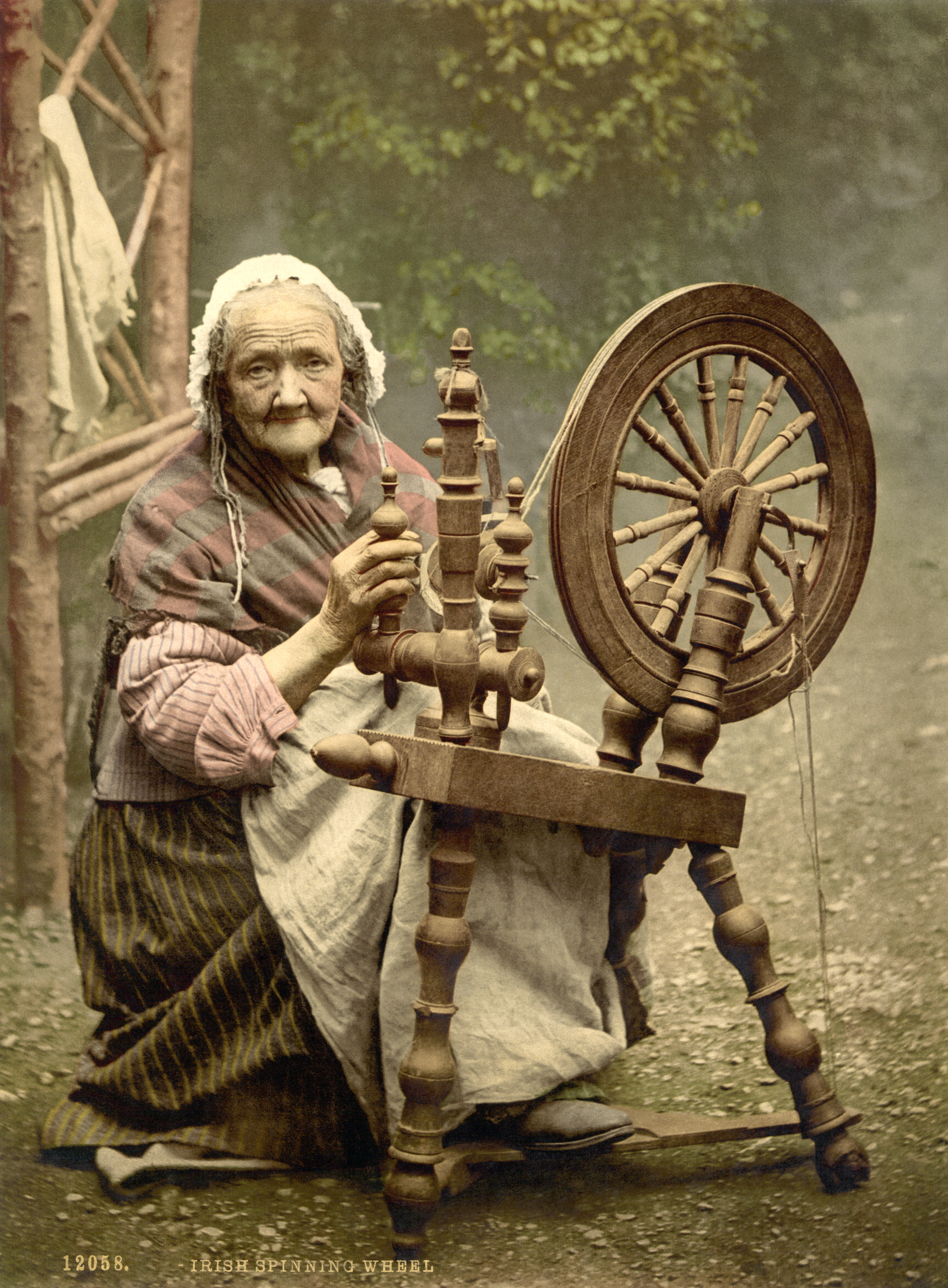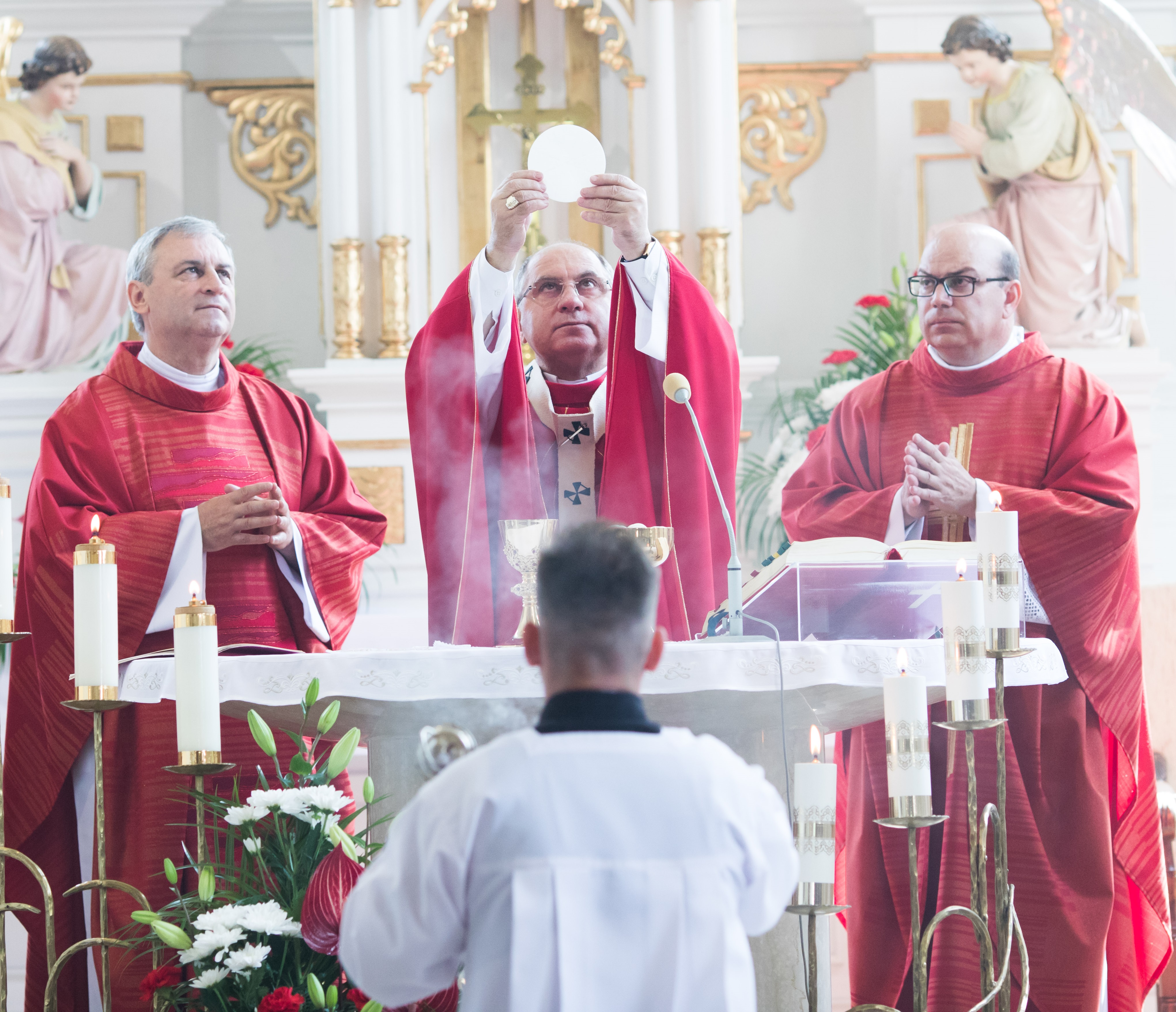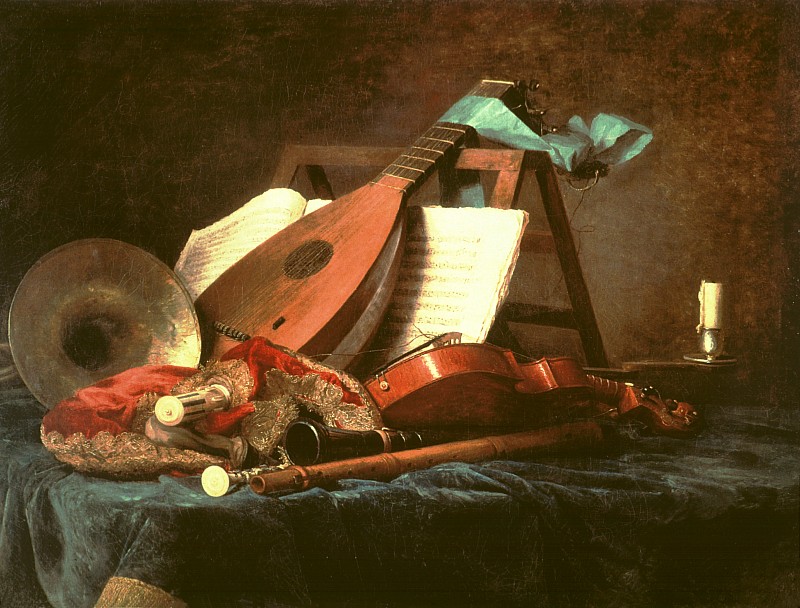|
Trinjan
Trinjan () was a Punjabi tradition of women gathering, spinning charkhas, and singing songs. It was customary in Punjabi culture, where women would sit together and engage in other domestic crafts like spinning, weaving, and singing. Trinjan was a symbol of women's strength, creativity, and emotional, cultural, ecological, and social ties. Spinning Hand spinning was integrally related to Trinjan, with women spinning and singing together in groups. Trinjan has long been a place of togetherness, collaborative wisdom, and shared abilities. The night trinjan was called as ',' and the day Trinjan was known as ' .' Trinjan songs 'Trinjan' refers to assembling for activities such as plying 'Charkhas' and singing songs. Trinjan songs have a distinctive status in Punjabi folk music. Trinjan songs were an expression of contemporary women's desires and sorrows. The sound of the spinning wheel used to blend as if it was an instrument. Dance 'Trinjan' a dance type include Punjabi Gid ... [...More Info...] [...Related Items...] OR: [Wikipedia] [Google] [Baidu] |
Charkha Being Plied By A Woman
{{Disambiguation ...
Charkha may refer to: * Charkha (spinning wheel), a type of Indian spinning wheel referenced in the teachings of Mahatma Gandhi ** "The Cult of the Charkha", a 1925 essay by Rabindranath Tagore * Charkha (Dhari, Gujarat), a village and former princely state in Gujarat, western India * Charkha Audiobooks, an imprint of the publisher Karadi Tales See also * Charka (other) * Chakra (other) * Chakram (other) * Chakri (other) Chakri may refer to: People * Chakri (composer) (1974–2014), Tollywood music director * Chakri Toleti, Indian American screenwriter, director, actor, and visual effects coordinator Other uses * Chakri (noble title), a historical Thai noble tit ... [...More Info...] [...Related Items...] OR: [Wikipedia] [Google] [Baidu] |
Punjab
Punjab (; Punjabi: پنجاب ; ਪੰਜਾਬ ; ; also romanised as ''Panjāb'' or ''Panj-Āb'') is a geopolitical, cultural, and historical region in South Asia, specifically in the northern part of the Indian subcontinent, comprising areas of eastern Pakistan and northwestern India. Punjab's capital and largest city and historical and cultural centre is Lahore. The other major cities include Faisalabad, Rawalpindi, Gujranwala, Multan, Ludhiana, Amritsar, Sialkot, Chandigarh, Jalandhar, and Bahawalpur. Punjab grew out of the settlements along the five rivers, which served as an important route to the Near East as early as the ancient Indus Valley civilization, dating back to 3000 BCE, and had numerous migrations by the Indo-Aryan peoples. Agriculture has been the major economic feature of the Punjab and has therefore formed the foundation of Punjabi culture, with one's social status being determined by land ownership. The Punjab emerged as an important agricultur ... [...More Info...] [...Related Items...] OR: [Wikipedia] [Google] [Baidu] |
Spinning Wheel
A spinning wheel is a device for spinning thread or yarn from fibres. It was fundamental to the cotton textile industry prior to the Industrial Revolution. It laid the foundations for later machinery such as the spinning jenny and spinning frame, which displaced the spinning wheel during the Industrial Revolution. Function The basic spinning of yarn involves taking a clump of fibres and teasing a bit of them out, then twisting it into a basic string shape. The spinner continues pulling and twisting to make it longer and longer, and to control the thickness. Thousands of years ago, people began doing this onto a stick, called a spindle, which was a very lengthy process. The actual wheel part of a spinning wheel does not take the place of the spindle, instead it automates the twisting process, allowing one to "twist" the thread without having to constantly do so manually, and also the size of the wheel lets one more finely control the amount of twist. The thread still ends ... [...More Info...] [...Related Items...] OR: [Wikipedia] [Google] [Baidu] |
Ritual
A ritual is a sequence of activities involving gestures, words, actions, or objects, performed according to a set sequence. Rituals may be prescribed by the traditions of a community, including a religious community. Rituals are characterized, but not defined, by formalism, traditionalism, invariance, rule-governance, sacral symbolism, and performance. Rituals are a feature of all known human societies. They include not only the worship rites and sacraments of organized religions and cults, but also rites of passage, atonement and ritual purification, purification rites, oaths of allegiance, dedication ceremonies, coronations and presidential inaugurations, marriages, funerals and more. Even common actions like handshake, hand-shaking and saying "hello" may be termed as ''rituals''. The field of ritual studies has seen a number of conflicting definitions of the term. One given by Kyriakidis is that a ritual is an outsider's or "Emic and etic, etic" category for a set activity (o ... [...More Info...] [...Related Items...] OR: [Wikipedia] [Google] [Baidu] |
Punjabi Culture
Punjabi culture grew out of the settlements along the five rivers (the name ''Punjab'', is derived from two Persian words, ''Panj'' meaning "Five" and ''Âb'' meaning "Water") which served as an important route to the Near East as early as the ancient Indus Valley civilization, dating back to 3000 BCE. Agriculture has been the major economic feature of the Punjab and has therefore formed the foundation of Punjabi culture, with one's social status being determined by landownership. The Punjab emerged as an important agricultural region, especially following the Green Revolution during the mid-1960's to the mid-1970's, has been described as the "breadbasket of both India and Pakistan". Besides being known for agriculture and trade, the Punjab is also a region that over the centuries has experienced many foreign invasions and consequently has a long-standing history of warfare, as the Punjab is situated on the principal route of invasions through the northwestern frontier of the Indian ... [...More Info...] [...Related Items...] OR: [Wikipedia] [Google] [Baidu] |
Weaving
Weaving is a method of textile production in which two distinct sets of yarns or threads are interlaced at right angles to form a fabric or cloth. Other methods are knitting, crocheting, felting, and braiding or plaiting. The longitudinal threads are called the warp and the lateral threads are the weft, woof, or filling. (''Weft'' is an Old English word meaning "that which is woven"; compare ''leave'' and ''left''.) The method in which these threads are interwoven affects the characteristics of the cloth. Cloth is usually woven on a loom, a device that holds the warp threads in place while filling threads are woven through them. A fabric band that meets this definition of cloth (warp threads with a weft thread winding between) can also be made using other methods, including tablet weaving, back strap loom, or other techniques that can be done without looms. The way the warp and filling threads interlace with each other is called the weave. The majority of woven pro ... [...More Info...] [...Related Items...] OR: [Wikipedia] [Google] [Baidu] |
Spinning (textiles)
Spinning is a twisting technique to form yarn from fibers. The fiber intended is drawn out, twisted, and wound onto a bobbin. A few popular fibers that are spun into yarn other than cotton, which is the most popular, are viscose (the most common form of rayon), and synthetic polyester. Originally done by hand using a spindle whorl, starting in the 500s AD the spinning wheel became the predominant spinning tool across Asia and Europe. The spinning jenny and spinning mule, invented in the late 1700s, made mechanical spinning far more efficient than spinning by hand, and especially made cotton manufacturing one of the most important industries of the Industrial Revolution. Process The yarn issuing from the drafting rollers passes through a thread-guide, round a traveller that is free to rotate around a ring, and then onto a tube or bobbin, which is carried on to a spindle, the axis of which passes through a center of the ring. The spindle is driven (usually at an angular ... [...More Info...] [...Related Items...] OR: [Wikipedia] [Google] [Baidu] |
Sing
Singing is the act of creating musical sounds with the voice. A person who sings is called a singer, artist or vocalist (in jazz and/or popular music). Singers perform music ( arias, recitatives, songs, etc.) that can be sung with or without accompaniment by musical instruments. Singing is often done in an ensemble (music), ensemble of musicians, such as a choir. Singers may perform as soloists or accompanied by anything from a single instrument (as in art song or some jazz styles) up to a symphony orchestra or big band. Different singing styles include art music such as opera and Chinese opera, Hindustani classical music, Indian music, Japanese music, and religious music styles such as Gospel music, gospel, traditional music styles, world music, jazz, blues, ghazal, and popular music styles such as pop music, pop, rock music, rock, and electronic dance music. Singing can be formal or informal, arranged, or improvised. It may be done as a form of religious devotion, a ... [...More Info...] [...Related Items...] OR: [Wikipedia] [Google] [Baidu] |
Folk Music Of Punjab
Punjabi folk music (Shahmukhi: پنجابی لوک موسیقی pa, ਪੰਜਾਬੀ ਲੋਕ ਸੰਗੀਤ or Punjabi Folk) is the traditional music on the traditional musical instruments of the Punjab region of the Indian subcontinent. There is a great repertoire of music from the time of birth through the different stages of joy and sorrow till death. The folk music invokes the traditions as well as the hardworking nature, bravery and many more things that the people of Punjab get from its gateway-to-India geographical location. Due to the large area with many sub-regions, the folk music has minor lingual differences but invokes the same feelings. The sub-regions, Malwa, Doaba, Majha, Pothohar, and hills areas, have numerous folk songs. Punjabi dance OP Bhangra music which is a genre of Punjabi modern music invented in Britain by the Punjabi diaspora. General features of musical style Rhythm The rhythm of Punjabi folk music is very simple. unlike the rhythms of Bhan ... [...More Info...] [...Related Items...] OR: [Wikipedia] [Google] [Baidu] |
Spinning Wheel
A spinning wheel is a device for spinning thread or yarn from fibres. It was fundamental to the cotton textile industry prior to the Industrial Revolution. It laid the foundations for later machinery such as the spinning jenny and spinning frame, which displaced the spinning wheel during the Industrial Revolution. Function The basic spinning of yarn involves taking a clump of fibres and teasing a bit of them out, then twisting it into a basic string shape. The spinner continues pulling and twisting to make it longer and longer, and to control the thickness. Thousands of years ago, people began doing this onto a stick, called a spindle, which was a very lengthy process. The actual wheel part of a spinning wheel does not take the place of the spindle, instead it automates the twisting process, allowing one to "twist" the thread without having to constantly do so manually, and also the size of the wheel lets one more finely control the amount of twist. The thread still ends ... [...More Info...] [...Related Items...] OR: [Wikipedia] [Google] [Baidu] |
Musical Instrument
A musical instrument is a device created or adapted to make musical sounds. In principle, any object that produces sound can be considered a musical instrument—it is through purpose that the object becomes a musical instrument. A person who plays a musical instrument is known as an instrumentalist. The history of musical instruments dates to the beginnings of human culture. Early musical instruments may have been used for rituals, such as a horn to signal success on the hunt, or a drum in a religious ceremony. Cultures eventually developed composition and performance of melodies for entertainment. Musical instruments evolved in step with changing applications and technologies. The date and origin of the first device considered a musical instrument is disputed. The oldest object that some scholars refer to as a musical instrument, a simple flute, dates back as far as 50,000 - 60,000 years. Some consensus dates early flutes to about 40,000 years ago. However, most historians ... [...More Info...] [...Related Items...] OR: [Wikipedia] [Google] [Baidu] |
Giddha
Giddha ( pa, گدها, ਗਿੱਧਾ, ) is a popular folk dance of women in the Punjab region. The dance is often considered derived from the ancient dance known as the ring dance and is just as energetic as bhangra; at the same time it manages to creatively display feminine grace, elegance and flexibility. It is a highly colourful dance form which has spread to all regions of India. Women perform this dance mainly at festive or social occasions. The dance is accompanied by rhythmic clapping, with a typical traditional folk song performed by elder women in the background. Giddha varies from other forms of traditional Punjabi dance in that it does not require the two-headed barrel '' dhol'' drum to be performed. Instead, women stand in a circle formation and clap rhythms. A lead woman will recite a ''boli'' (lyrics) with a refrain that the entire circle then repeats. The whole form of a giddha song is worked through in this call and response form. Giddha details stories of ... [...More Info...] [...Related Items...] OR: [Wikipedia] [Google] [Baidu] |






.jpg)

_-_Copy.jpg)
